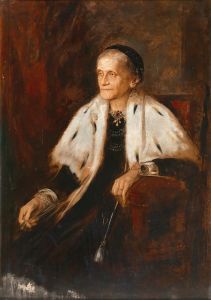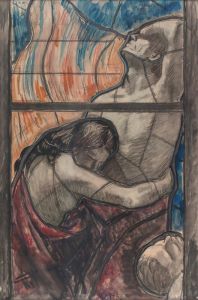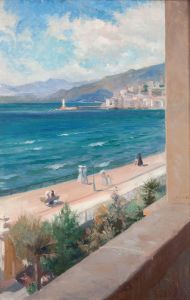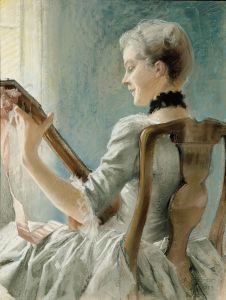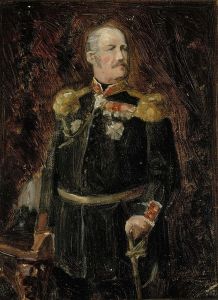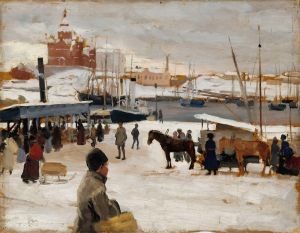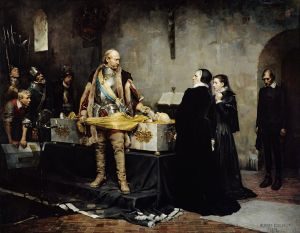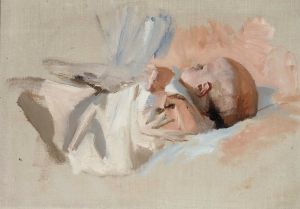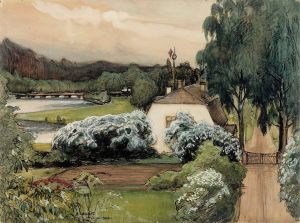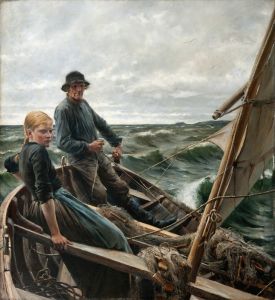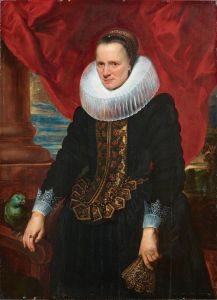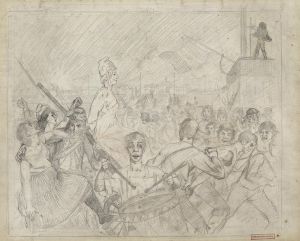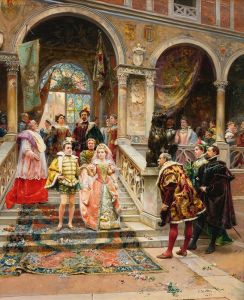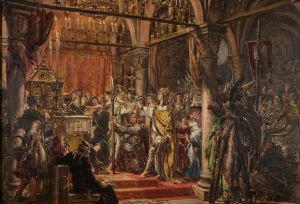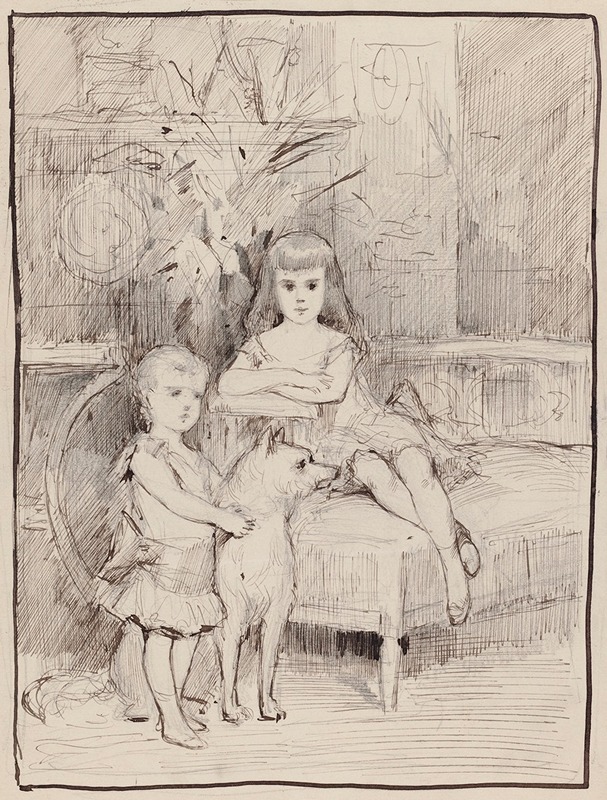
Study, Michael and Xenia, Children of Alexander III
A hand-painted replica of Albert Edelfelt’s masterpiece Study, Michael and Xenia, Children of Alexander III, meticulously crafted by professional artists to capture the true essence of the original. Each piece is created with museum-quality canvas and rare mineral pigments, carefully painted by experienced artists with delicate brushstrokes and rich, layered colors to perfectly recreate the texture of the original artwork. Unlike machine-printed reproductions, this hand-painted version brings the painting to life, infused with the artist’s emotions and skill in every stroke. Whether for personal collection or home decoration, it instantly elevates the artistic atmosphere of any space.
Study, Michael and Xenia, Children of Alexander III is a painting created by Finnish artist Albert Edelfelt in 1881. The work depicts two of the children of Tsar Alexander III of Russia: Grand Duke Michael Alexandrovich and Grand Duchess Xenia Alexandrovna. Edelfelt, a prominent painter of the late 19th century, was known for his portraits and genre scenes, and this painting is an example of his skill in capturing the likeness and character of his subjects.
The painting was commissioned during Edelfelt's visit to Russia, where he gained recognition for his artistic talent. At the time, Edelfelt had already established himself as a respected artist in Europe, and his connections with the Russian imperial family allowed him to undertake this significant project. The portrait was likely intended to serve as a representation of the royal children during their youth, showcasing their status and familial ties.
Grand Duke Michael Alexandrovich, born in 1878, was the youngest son of Alexander III and Empress Maria Feodorovna. Grand Duchess Xenia Alexandrovna, born in 1875, was the eldest daughter of the imperial couple. In the painting, Edelfelt portrays the siblings in a naturalistic and intimate manner, reflecting the artist's ability to convey both the individuality of his subjects and the familial bond between them.
The painting is executed in Edelfelt's characteristic style, which combines realism with a sensitivity to light and texture. The composition focuses on the children, with attention to their expressions and posture, creating a sense of immediacy and warmth. The background is kept simple, ensuring that the viewer's attention remains on the figures.
Albert Edelfelt's work for the Russian imperial family contributed to his international reputation and strengthened cultural ties between Finland and Russia during a period when Finland was an autonomous Grand Duchy under Russian rule. The painting is considered an important example of Edelfelt's portraiture and his ability to work within the context of European aristocracy.
The current location of the painting is not widely documented, and it is unclear whether it remains in a private collection or is part of a museum's holdings. Despite this, the work is remembered as a significant piece in Edelfelt's oeuvre and a testament to his role as a portraitist of notable historical figures.





